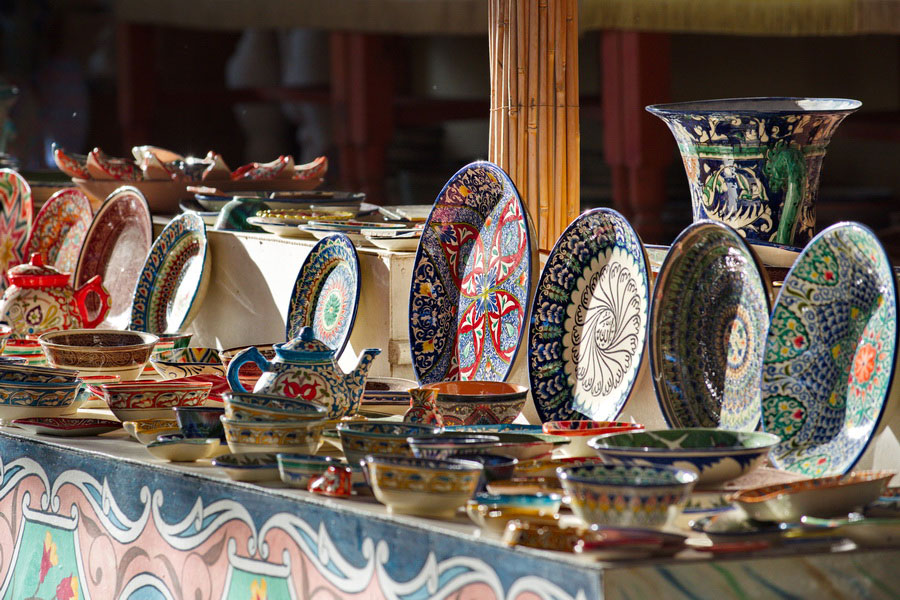
The history of Uzbek crafts stretches back to ancient times, when people living in the territory of present-day Uzbekistan first began shaping natural materials into everyday tools and objects. Recent research (2025) has revealed that arrowheads discovered in the Obi-Rakhmat Grotto in the Tashkent region are approximately 80,000 years old making them the oldest arrow fragments found anywhere on the Eurasian continent.
By the beginning of the first millennium AD, Uzbekistan had become a key hub along the Silk Road. For nearly 1,500 years, cities such as Tashkent, Samarkand, Bukhara, and Khiva served as major centers of production and trade for Uzbek handicrafts. At the time, silk from Margilan, ceramics from Rishtan, Samarkand paper, and carpets from Bukhara were prized from China to Europe.
Today, centuries later, the craft traditions of Uzbekistan are carefully preserved. Master artisans continue to follow age-old techniques, passing their knowledge down to apprentices. Thanks to their dedication, we can still see the types of dishes once used, the clothes and jewelry once worn—and even purchase authentic replicas made in exactly the same way.
Embroidery of Uzbekistan
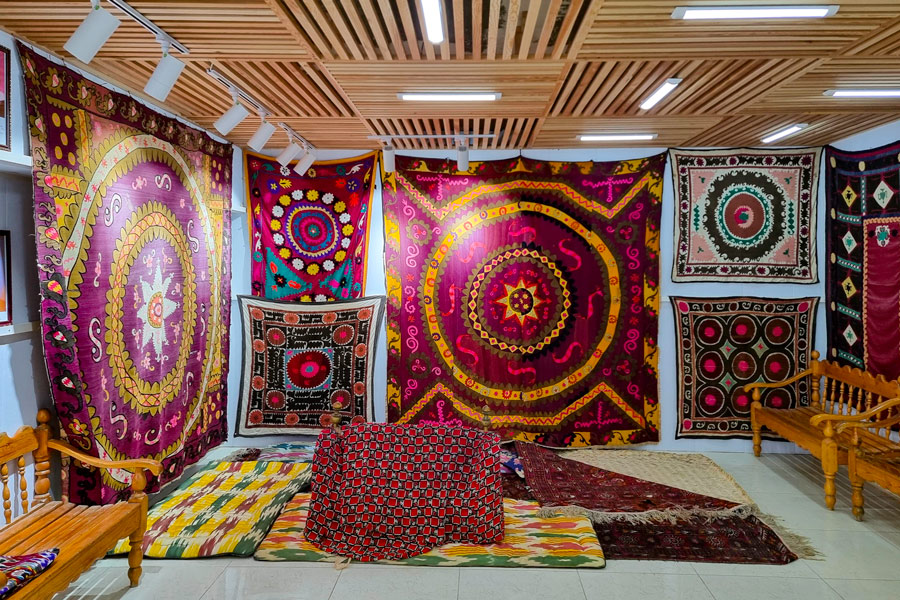
Handmade Uzbek embroidery, known as suzani, is more than decoration - it is a national symbol, a form of art, a collector’s item, and a prestigious gift. Embroidered garments are worn by high-ranking officials and their spouses at formal events; Uzbek chapan robes with contemporary embroidery are part of the British Museum’s permanent collection. In 2018, the President of Uzbekistan presented a suzani blanket valued at over $4,000 to U.S. First Lady Melania Trump.
Uzbek embroidery is traditionally grouped into three major regional styles: Bukhara, Samarkand, and Fergana. The Bukhara style closely resembles the embroidery of Nurata, Shakhrisabz, and Kitab, while the Samarkand style is similar to that of Tashkent, Jizzakh, and Baysun. Each style is distinguished by its ornamental motifs, stitch density, and color palette. Historically, suzani was imbued with symbolic meaning, and its creation was often accompanied by rituals and ceremonial practices.
Today, Uzbek embroidery can be seen in major museums and artisan workshops alike. In Uzbekistan, it is displayed at the Museum of Art, the Museum of Applied Arts, and in private studios such as “Suzani by Kasymbaeva”, led by master embroiderer Madina Kasymbaeva. Internationally, the Minneapolis Institute of Art houses embroidered bags from Shakhrisabz, Nurata, and Bukhara - pieces once believed to carry protective functions. Nurata and Bukhara embroidery is also part of the Australian Powerhouse Museum’s collection, while in Hawaii, the Doris Duke Museum of Islamic Art preserves 15 unique examples of Uzbek suzani.
Gold Embroidery Craftsmanship in Uzbekistan
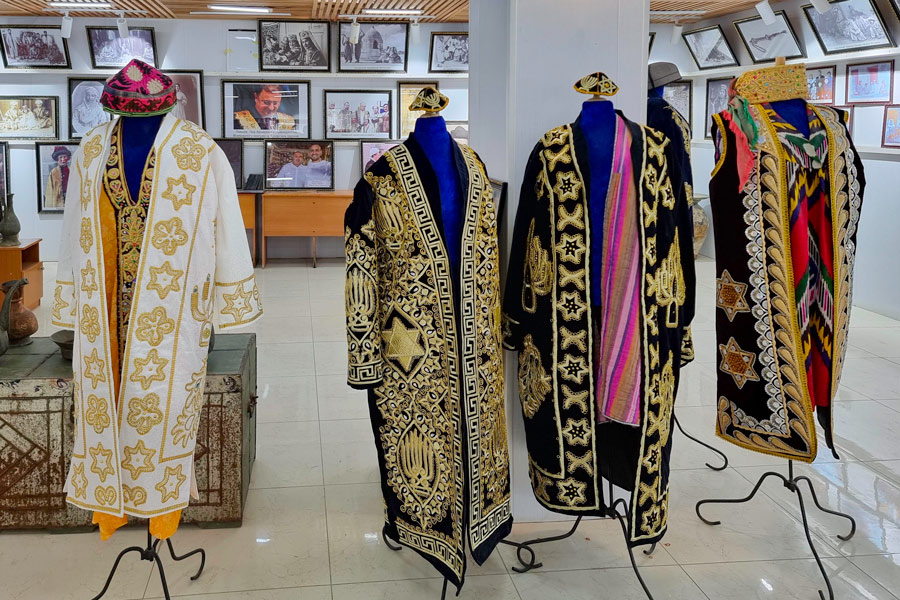
The art of zarduzi, or gold embroidery, developed in Bukhara and reached its peak during the era of the Bukhara Emirate. By the late 19th century, embroidery workshops had been established at the emir's court, where male artisans decorated velvet and silk garments, accessories, and interior textiles using gold and silver threads.
Some historic pieces - such as embroidery created for the Emir of Bukhara - were made with silk threads wrapped in genuine gold and silver. Today, such works are rare, but a few have survived. Chapan coats embroidered for the ruler, along with exquisite gold-embroidered skullcaps, are preserved in museum collections across Uzbekistan. In 2024–2025, these items were featured in the exhibition Heritage in Stitches: A Journey Through the Embroidery and Sewing Traditions of Uzbekistan, held in Paris, Baku, and Astana.
Today, the tradition of gold embroidery continues through the work of contemporary masters, including Nodir Rasulov, a prominent Uzbek artisan featured in the prestigious Homo Faber Guide to global craftsmanship. Rasulov produces distinctive pieces that blend time-honored techniques with modern design. His work, along with that of other artisans from Uzbekistan and abroad, can be seen at the International Festival of Gold Embroidery and Jewelry - held every two years in spring in Bukhara since 2022.
Carpet Weaving in Uzbekistan
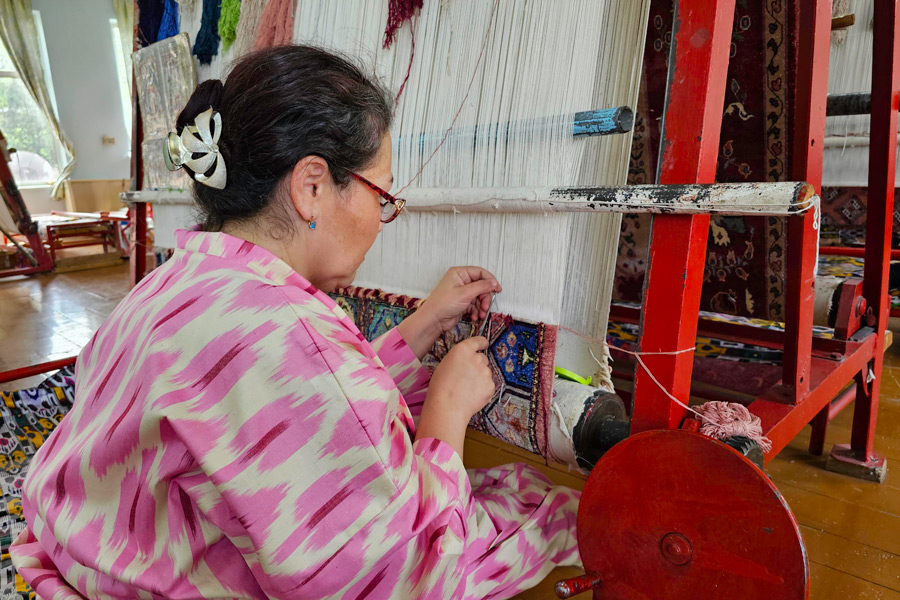
Carpet weaving is one of Uzbekistan’s oldest crafts, with a history stretching back thousands of years. The earliest known examples of carpets from the region date to around the 2nd century BC, some of which have survived in fragments.
Uzbek carpets are typically either short-pile, known as gilyam, or long-pile, called julkhirs. The most common are gilyams, traditionally woven from silk or wool. Each piece features intricate ornamental patterns that vary by region. These motifs are more than decorative - they are believed to bring prosperity, ensure family continuity, and protect the home from misfortune and the evil eye.
Today, some of the most authentic Uzbek carpets are produced in Surkhandarya, particularly in the Baysun district, whose weaving heritage has been recognized by UNESCO. Major centers of production also include Samarkand and Bukhara. The Samarkand Hujum carpet factory, for instance, employs over 400 female artisans who hand-weave carpets of exceptional craftsmanship. Bukhara is home to another prominent workshop - the factory of Sabina Burhanova, a celebrated Uzbek weaver featured in the Homo Faber Guide - where visitors can view a rich collection of traditional carpets.
Uzbek Fabrics
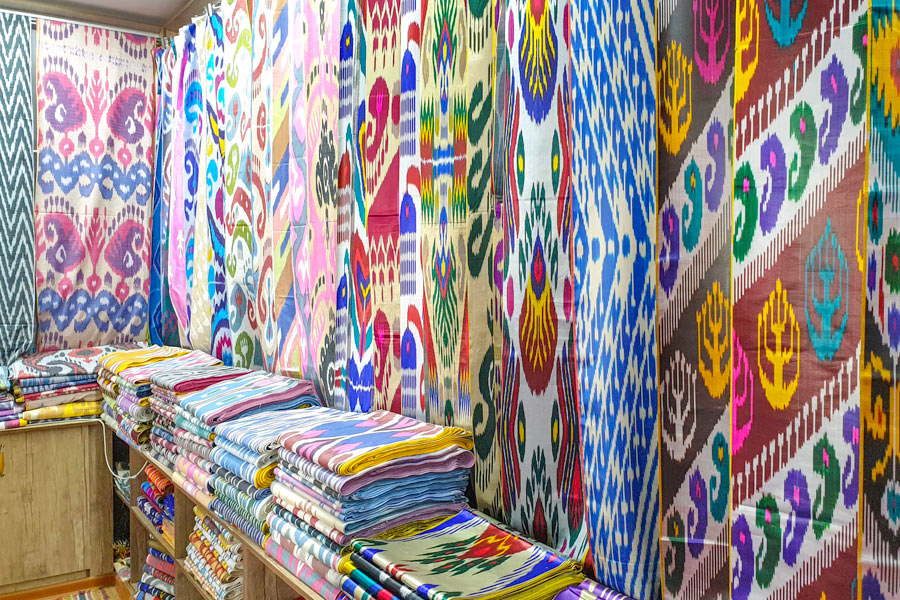
Bright and distinctive, Uzbek fabrics are internationally recognized for their vivid color schemes, intricate patterns, and eco-friendly production methods. Handmade Uzbek silk fabrics are particularly renowned, with silk weaving so unique that it has been inscribed on UNESCO’s Representative List of the Intangible Cultural Heritage of Humanity.
Silk is used to produce two of Uzbekistan’s most iconic textiles – satin (atlas) and adras. Satin is made entirely from silk threads, while adras incorporates 50 percent cotton, giving it a more matte texture.
No discussion of Uzbek textiles is complete without ikat, a technique that continues to inspire designers worldwide. Giorgio Armani, for instance, featured Uzbek ikat in his Spring-Summer 2020 collection. Ikat is a complex dyeing method that creates slightly blurred patterns resembling drifting clouds. In Uzbekistan, such fabrics are often called abrovy, meaning “cloudy”. A widely cherished version of abrovy is khan-atlas - a shimmering fabric that reflects the full spectrum of colors.
Today, fabric production thrives in cities such as Bukhara, Samarkand, Namangan, and Kokand, but Margilan remains the historical heart of silk weaving, dating back to the era of the Silk Road. The city is home to the Yodgorlik factory, as well as independent workshops and the Crafts Development Center. In 2017, UNESCO recognized the center’s contributions, including its preservation of satin and adras weaving, by registering its methods as a best practice in safeguarding intangible cultural heritage.
One of Margilan’s most acclaimed contemporary artisans is master silk weaver Nurmuhammad Valiev, whose workshop continues to uphold traditional techniques while producing fabrics of exceptional quality.
Uzbek Ceramics
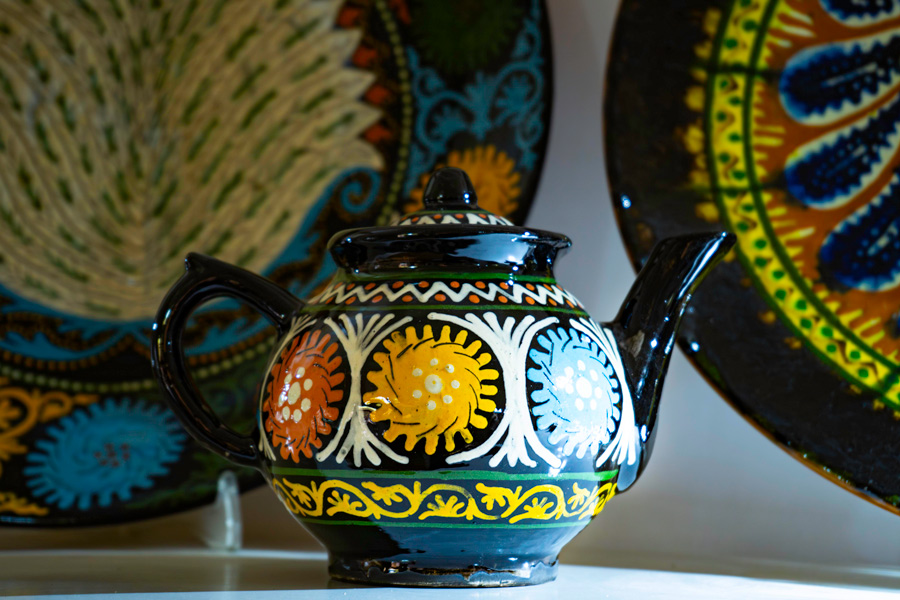
Ceramics are one of the most treasured forms of applied art in Uzbekistan. With a history spanning more than 5,000 years, they display remarkable diversity in style, ornamentation, and function - whether domestic or decorative - and preserve a tangible link to the region’s ancient craftsmanship.
Some of the earliest ceramic objects found on the territory of modern Uzbekistan date to the 3rd millennium BC and are now housed in the History Museum of Tashkent.
The art of ceramics flourished in the 14th and 15th centuries during the Timurid era. Amir Timur brought master artisans, including potters, from across his empire to Samarkand, catalyzing a major revival in ceramic production. During this period, ceramics were increasingly used in architecture. Many of these centuries-old works - their colors and textures still intact - can be admired on the historic buildings of Samarkand and Bukhara, as well as in museum collections worldwide.
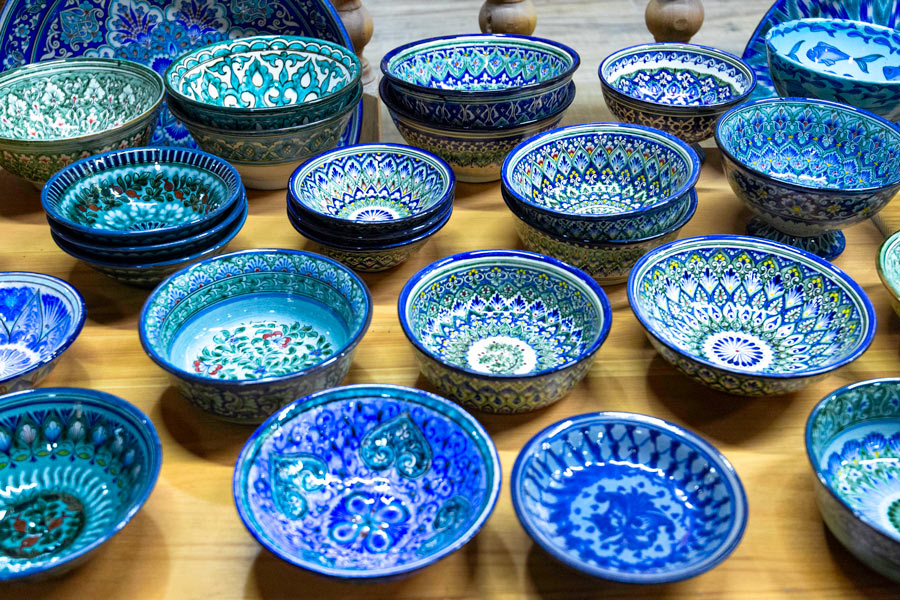
The sky-blue ceramics of Rishtan, in the Fergana Valley, are perhaps the most internationally recognized. Other notable centers include Gurumsaray (also in the Fergana region), Gijduvan (near Bukhara), Shakhrisabz (Kashkadarya), and Khiva (Khorezm region). Each school is characterized by distinct glazes, color palettes, and painting techniques. These regional traditions live on through the work of contemporary ceramicists such as Akbar Rakhimov (Tashkent), Alisher Nazrullaev, Alisher Nazirov, and Rustam Usmanov (Rishtan), and Vakhobjon Buvayev (Gurumsaray).
In 2023, Uzbekistan’s richly varied ceramic art was inscribed on UNESCO’s Representative List of the Intangible Cultural Heritage of Humanity.
Jewelry Art of Uzbekistan
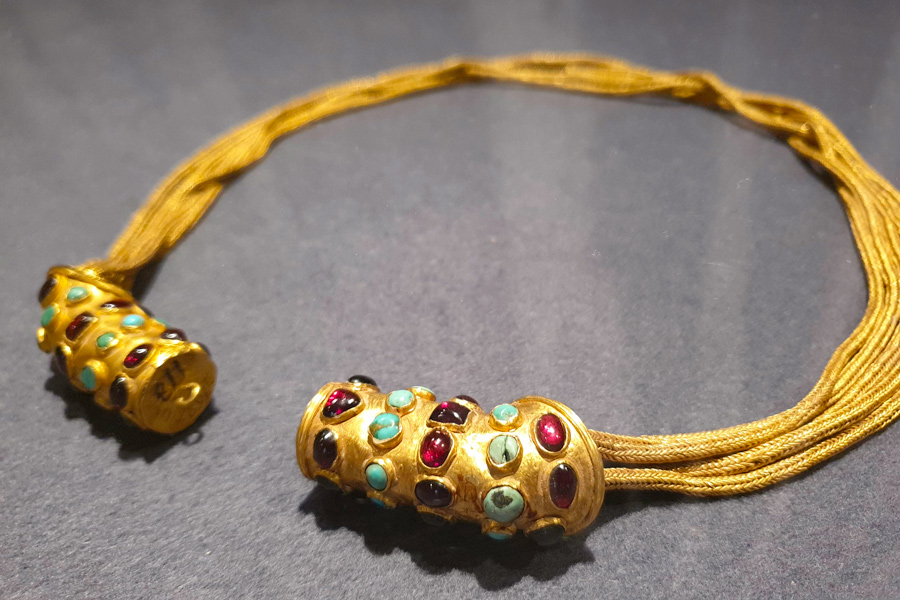
Uzbekistan is rich in mineral resources, including precious metals and gemstones. The country has substantial reserves of silver and copper and is home to one of the world’s largest gold deposits - the Muruntau quarry - placing Uzbekistan among the top ten gold-producing nations globally.
Historically, gold jewelry in Uzbekistan was reserved for the nobility, both in ancient and medieval times. Commoners wore ornaments made from more affordable metals such as silver, copper, or bronze. With the spread of Islam, gold became primarily associated with women, while men favored silver. All forms of jewelry were adorned with decorative elements - coral, pearls, rubies, emeralds, mother-of-pearl, or colored glass.
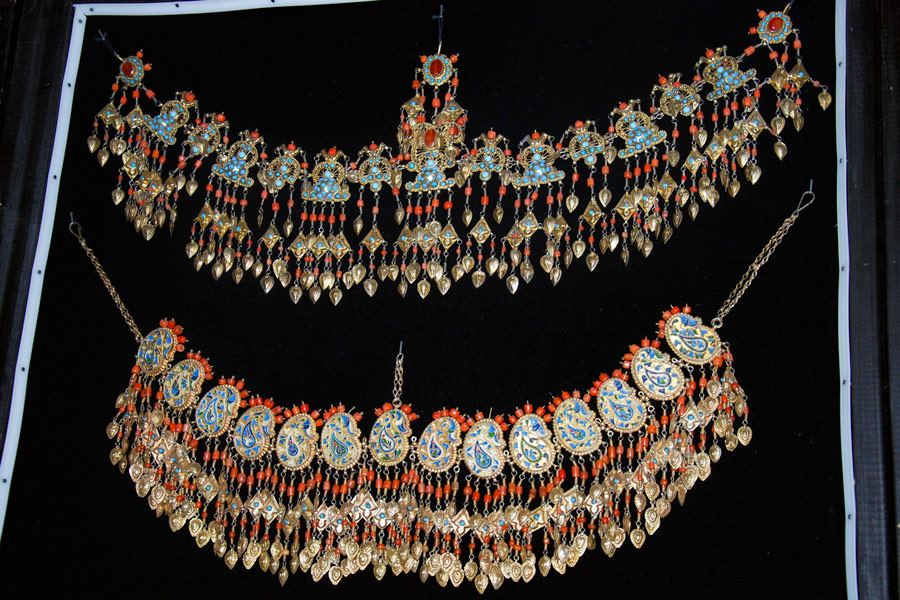
The most striking examples of Uzbek jewelry are traditional women's adornments. These include large, intricately shaped earrings and rings, often featuring traditional techniques such as blackening or engraving; multi-layered necklaces with complex woven designs; and ornate diadems inlaid with gemstones known as tilla-kosh - meaning “golden eyebrows” - which remain part of the national costume today.
The principal centers of handmade jewelry production in Uzbekistan have long included Karshi, Kokand, Samarkand, Bukhara, and Khiva. In recent years, Tashkent has also emerged as a key hub for the regional jewelry industry. Since 2023, the capital has hosted the International Jewelry Fair every two years, drawing visitors and investors from around the world. Handmade jewelry can also be seen at other major cultural events in Uzbekistan, such as the Festival of Gold Embroidery and Jewelry in Bukhara.
Wood Carving in Uzbekistan
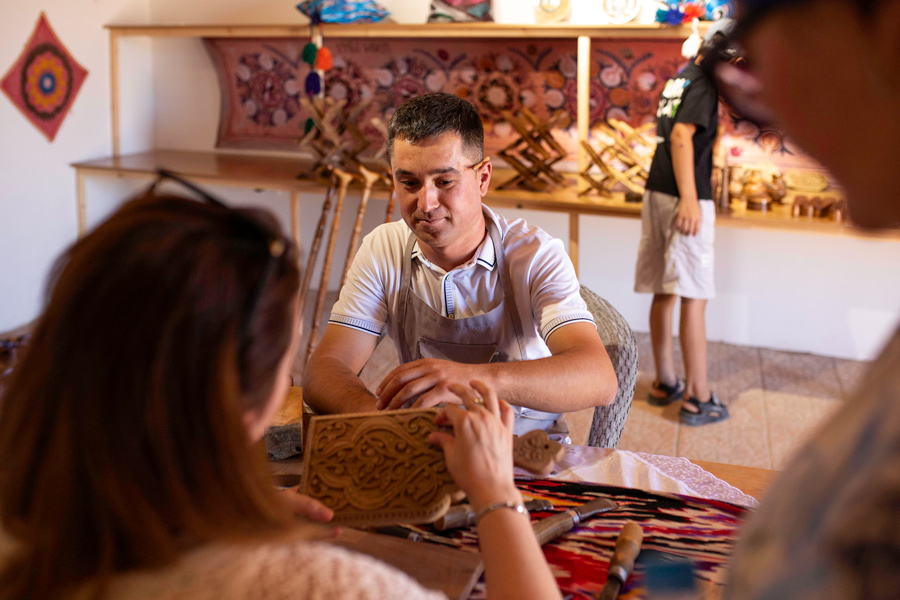
Wood carving is a distinctive branch of Uzbek craftsmanship, rooted in ancient traditions and shaped by regional styles. Each area of Uzbekistan is known for its own approach. In Fergana, the carving is delicate and intricate; in Samarkand, geometric motifs dominate; while in Tashkent, the style is more austere, distinguished by selective use of varnish and color. In contrast, many local traditions avoid such finishing techniques altogether. For example, in Khiva, carvings are left unvarnished and treated only with natural oils.
This Khiva method preserves the wood’s natural look, giving it an organic and visually appealing character. It is exemplified by the city’s renowned architectural features - more than 200 carved columns and numerous doors of the Juma Mosque in Ichan-Kala, crafted between the 14th and 19th centuries. The mosque, one of Khiva’s most atmospheric landmarks, draws thousands of visitors annually. Its aesthetic also inspired the design of the Uzbekistan pavilion, Garden of Knowledge, one of the standout installations at Expo 2025 in Osaka, Japan.
Other Crafts of Uzbekistan
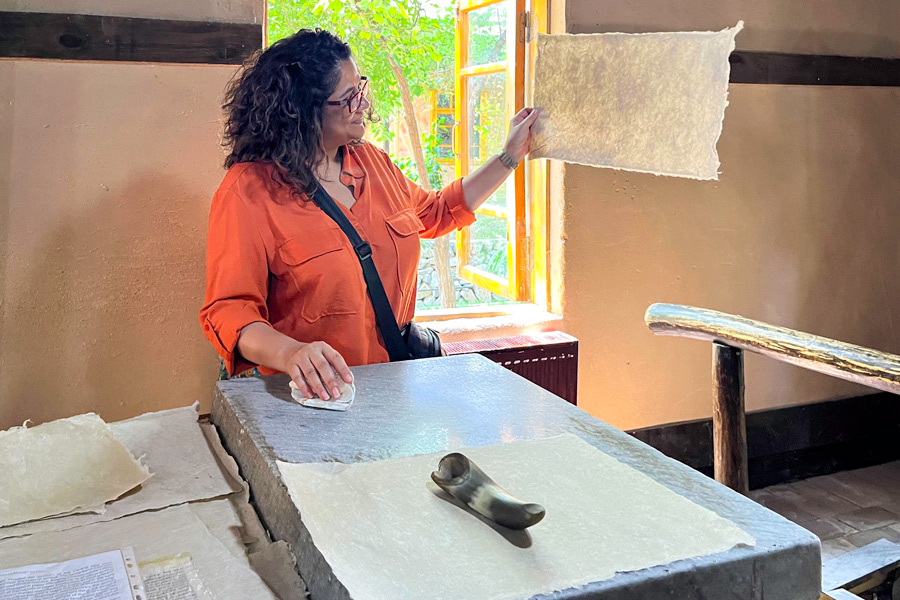
Alongside the major craft traditions, Uzbekistan is also home to a wide array of other time-honored arts, including ganch carving, copper embossing, leatherworking, doll making, and the production of the world-renowned Samarkand paper. This centuries-old papermaking technique had been lost for nearly two hundred years before being revived by brothers Zarif and Islam Mukhtarov, who now operate the Konigil Meros factory.
Visitors can explore these crafts in dedicated workshops across the country, where artisans offer guided tours and master classes while sharing the history and techniques of their work. Many workshops also serve as educational centers, with training programs and guest accommodations for apprentices and tourists interested in learning more about traditional craftsmanship.
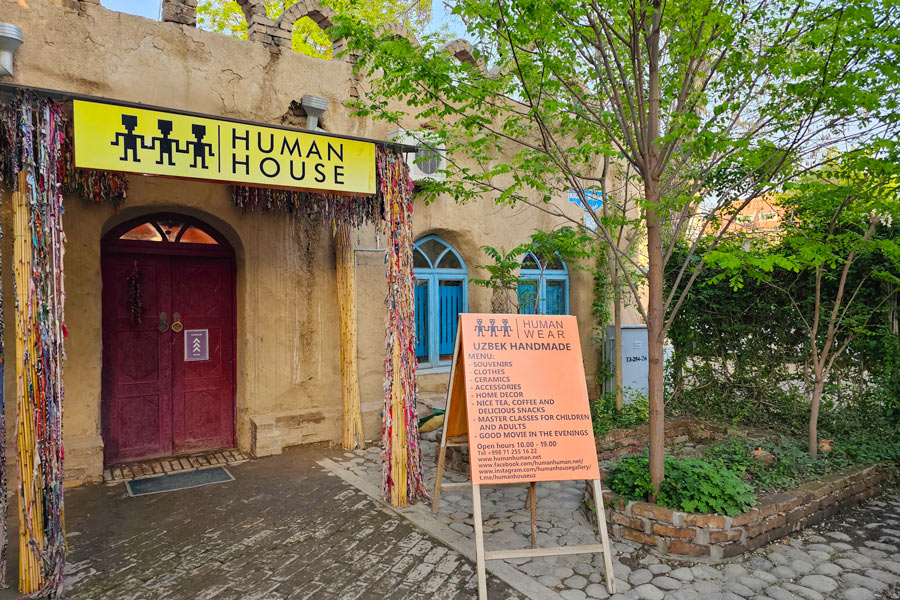
Handicrafts are available for purchase directly from workshops, at local markets, and in stalls near popular tourist sites. There are also specialized stores and galleries, such as the Happy Bird Art Gallery in Samarkand - where guests are welcomed with a cup of coffee - and Human House in Tashkent, which showcases a curated collection of crafts from across Uzbekistan. Another notable venue is Risola Handicraft House, which opened in Tashkent in September 2025.
Craft lovers can also experience Uzbekistan’s rich artisanal culture at major festivals. Among the most celebrated are the Silk and Spices and Gold Embroidery and Jewelry festivals in Bukhara.

